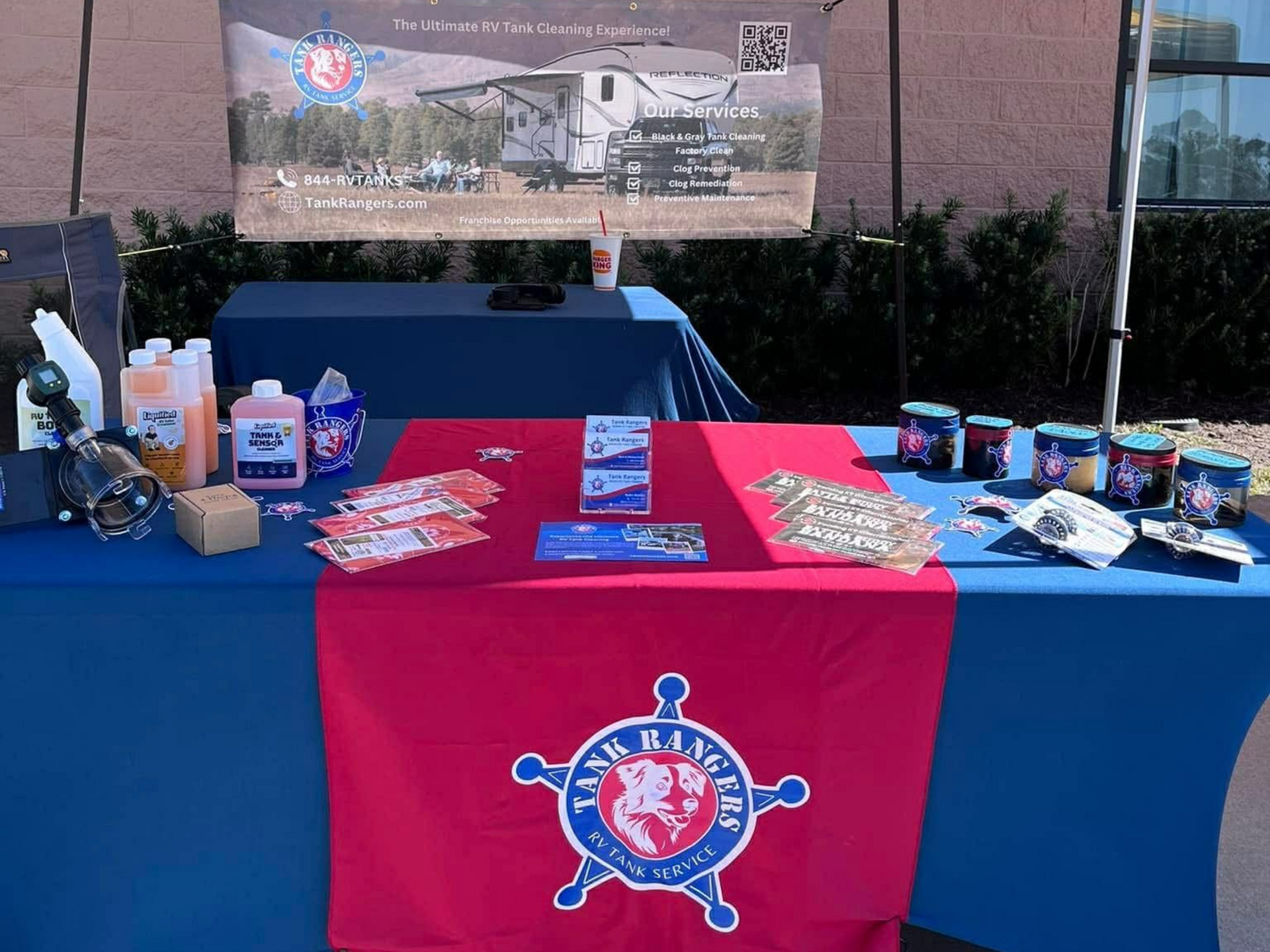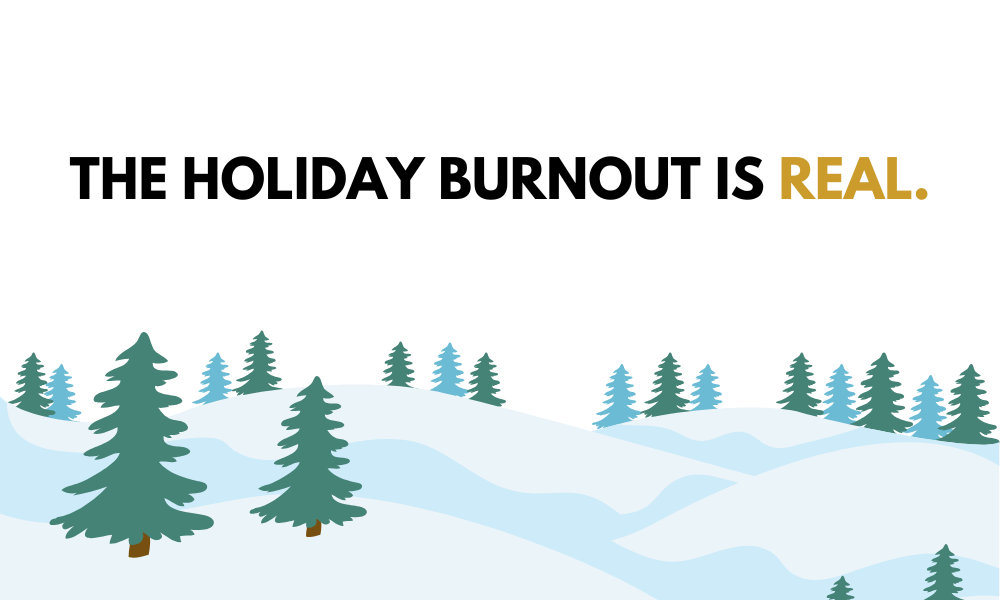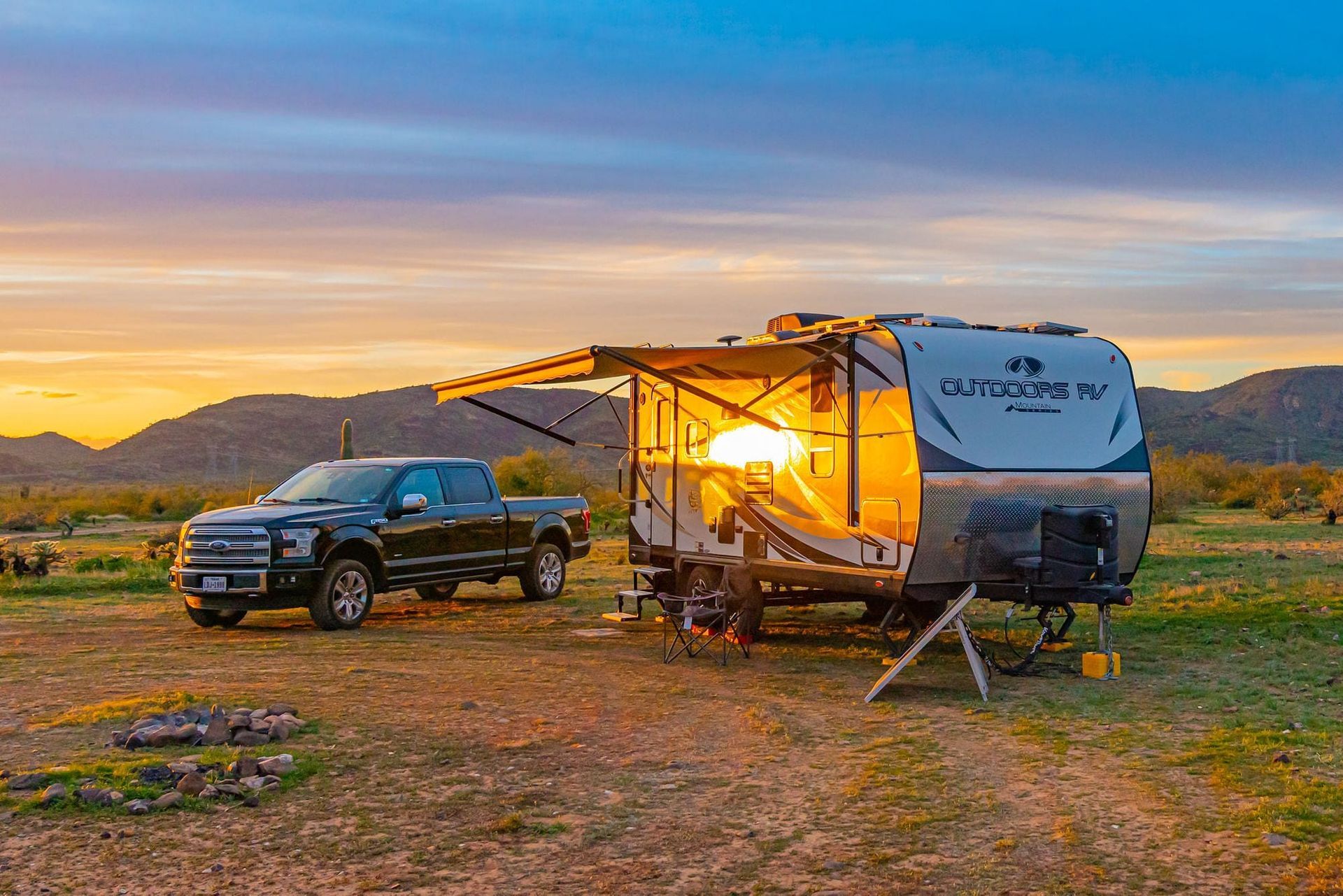The 3-3-3 Rule & Travel Day Realities: Lessons from the Road
Jennifer Aggio • May 13, 2025
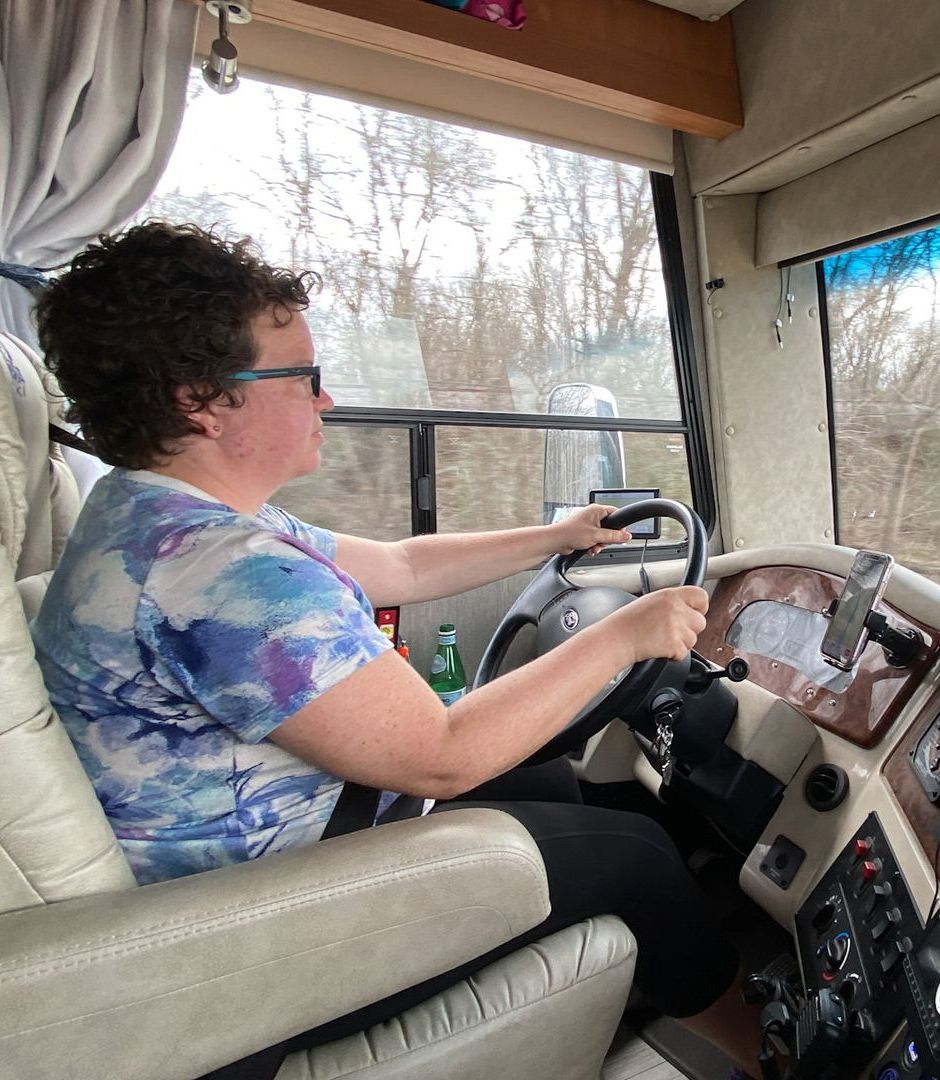
When you're full-time RVing, travel days aren’t just about getting from Point A to Point B. They’re about staying safe, keeping your sanity, and arriving in one piece both mentally and physically. That’s where the3-3-3 rule comes into play.
It’s a guideline many RVers use to simplify planning and reduce burnout. But as we’ve learned over the years (and thousands of miles), travel days are shaped by a lot more than just how far you go. Your rig, your family, your fuel needs, and your flexibility all make a difference.
This blog shares not just the what, but the why, and a good bit of my personal experience behind the wheel. After over 7.5 years full-time on the road, I’ve driven it all. Each setup has taught me something new about the road, and those lessons are woven into everything you’ll read here.
What Is the 3-3-3 Rule?
The 3-3-3 rule isn’t a strict formula, different RVers interpret it in different ways depending on their travel style, priorities, and needs. While the general idea remains consistent, how it's applied can vary. The goal is simply to create a more relaxed, manageable travel day.
The 3-3-3 rule is a simple travel rhythm to keep RV days manageable:
- Drive no more than 300 miles in one day
- Stop once every 3 hours to rest
- Arrive at your campsite before 3 PM
- Some will say instead of stopping once every 3 hours you stay 3 days in one spot before leaving again but I have found that can be a lot harder to do on average because most of the time you are headed somewhere and need to be there by a certain time. So this 3-3-3 formula works better for all scenarios.
While it’s not a hard rule, it’s one we try to follow as often as possible. It helps avoid:
- Driver Fatigue which can lead to more mistakes
- Driving in the dark
- Navigating tight campgrounds at dusk
- Showing up grumpy and exhausted
- Missing out on exploring your new destination
Honestly, some of our least favorite travel days were the ones where we ignored (or rather totally missed) this rule and pushed too hard. One time, after trying to squeeze in just "one more stop" before pulling in for the night, we rolled into an unlit campground after 9 PM. We were tired, snappy with the kids, and stressed out trying to park. Lesson learned.
Driving Different Rigs: My Real-World Experience
Side Note: As the full-time driver in our family and yes, I’m the girl behind the wheel. I’ve learned firsthand that women are more than capable of handling big rigs with confidence. Whether it’s towing a travel trailer, navigating a motorhome, or pulling a fifth wheel, I’ve done it all. It might feel intimidating at first, but with time and experience, you find your rhythm, and trust me, you’ve got this.
After years on the road, I’ve driven it all: a 1 ton 13 passenger van towing a 35' travel trailer, a 37' Class A motorhome with a toad, and now a long bed dually pickup truck with a 42' fifth wheel. Each one handles differently and each one affects how tired you feel at the end of the day. Everyone's experience might be different, but this is mine!
1 Ton, 13 Passenger Van Towing a 35' Travel Trailer
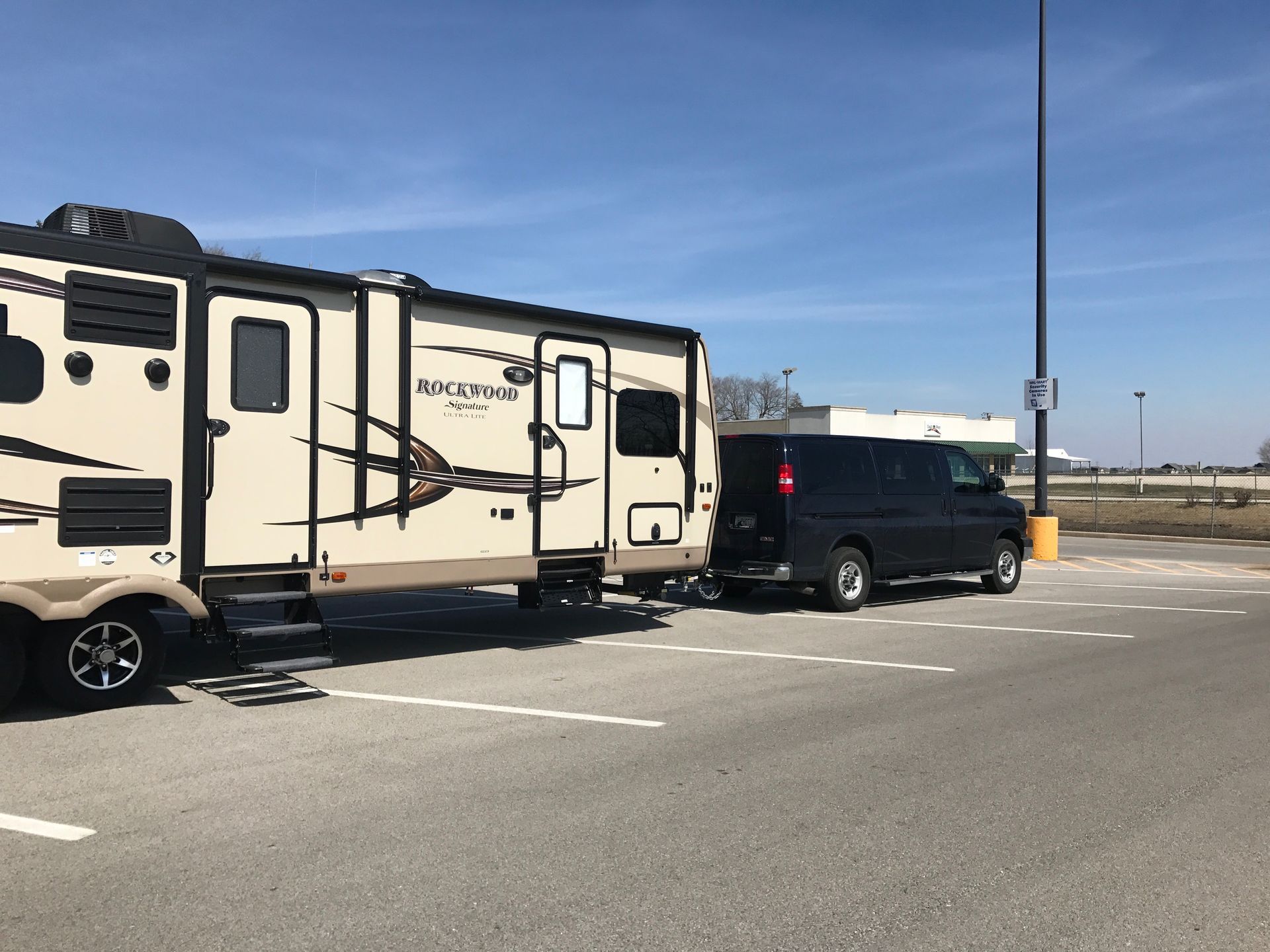
This was our first RV setup. To be honest, this was the most exhausting to drive. Towing a travel trailer was nerve-wracking on windy highways and steep grades. I constantly felt the trailer pushing and pulling, (we had a great Propride hitch too, which helped immensely) but most of the time I was white-knuckling the wheel more often than not. I would get to our site physically and mentally drained even after just a few hours on the road.
37' Motorhome with Toad
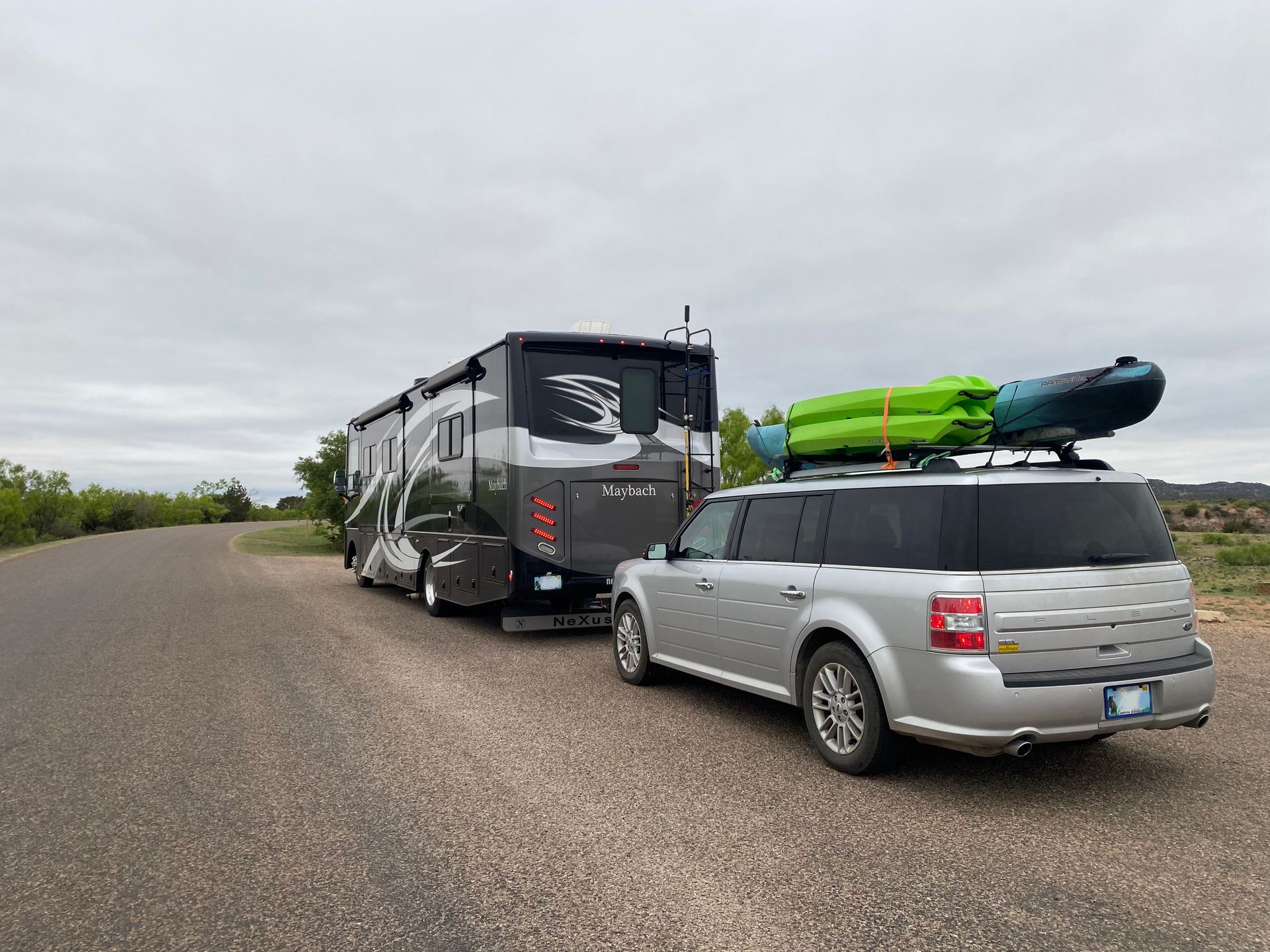
Switching to a motorhome was like flipping a switch. One of our first travel days was a long haul of a 13-hour day across three states. I was bracing for exhaustion but to my surprise, I still felt fresh when we arrived! The smoother ride, better driver visibility, and more comfortable seating made all the difference (plus I followed my travel day tips I am sharing below). It didn’t even feel like 13 hours. I remember thinking: This is how travel days should feel.
Dually Truck with 42' Fifth Wheel
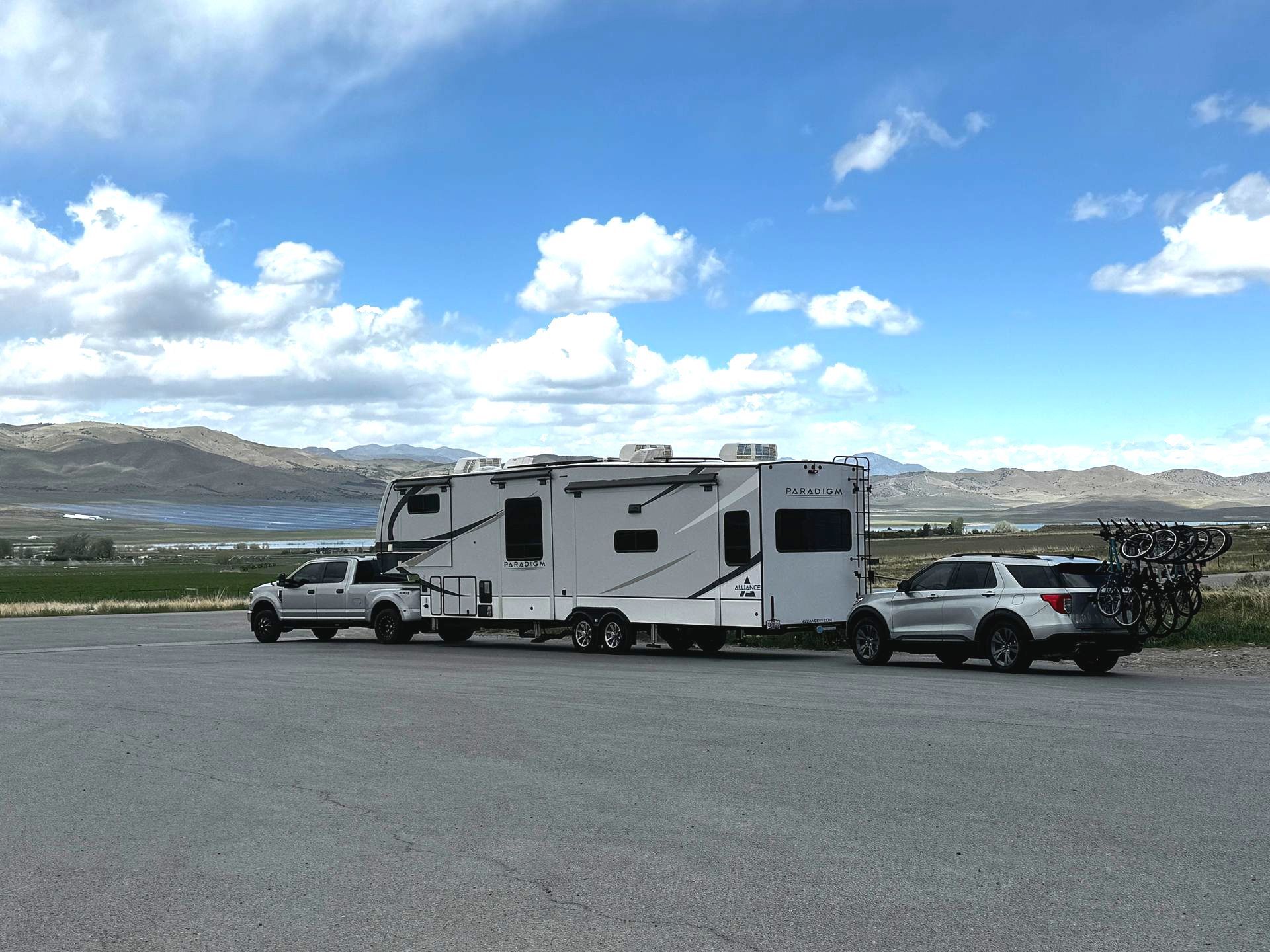
We’ve now been towing a fifth wheel for a while, and it is definitely my favorite yet. It’s smoother then the motorhome, and I actually feel more in control while driving. The way the fifth wheel connects to the truck bed helps reduce sway and gives me a feeling of stability, especially on highways or in bad weather. Because I feel more secure, I stress less and I don’t get nearly as fatigued by the end of the day.
These are my experiences with each, a different person might have the opposite experience. You have to figure out what is best for you.
What to Consider on Travel Days
Travel days aren’t just about the drive. They’re about everything that comes with it. Here are some of the biggest factors that shape how we plan.
Gas Stops
We often try to plan travel days within one tank of gas. The reason for this is because we drive with a gas truck not a diesel and maneuvering gas stations can be a challenge. That means I’m looking at the mileage range and choosing a destination that falls safely within it (usually around 300 miles or less).
That said… I always have a gas station picked out as a backup plan, just in case I need to fuel up before we get to our destination. There have been plenty of times where a headwind, extra stops, or steep climbs mess with fuel efficiency.
Pro Tip: Always scout your gas stops on Google Maps, Street View is a game-changer. It lets you see how easy (or impossible) it might be to pull in with your rig. We’ve avoided so many tight turns and low canopies this way.
Kids Onboard
Travel days with kids are an adventure all their own. When ours were little, we’d barely be an hour in before someone needed a bathroom, snack, or a break from being strapped in.
The younger the child, the more breaks you’ll need and that can seriously extend your travel time. That’s why we lean into the “3-hour driving block” rule, and plan plenty of wiggle room.
Breaks are also the perfect time for snacks. A hungry kid (or grown-up) is not a happy traveler. We’ve learned to always keep a stash of easy-to-grab snacks handy. It makes a world of difference in keeping everyone sane between stops.
What If You’ve Got a Long Way to Go?
Sometimes you have to cover a lot of miles in a short time, whether it’s a campground reservation, an appointment, or weather chasing you across the map. When we’ve had to do big days, here’s what’s helped us make it through:
Tips for Long Travel Days
1
START EARLY
The earlier you hit the road, the better. One of my favorite travel memories is watching the sunrise while driving across the plains, coffee in hand, everyone else still snoozing. That 13-hour drive I mentioned earlier? We left before the sun came up. It gave us hours of daylight and made the day feel more spread out.
2
PLAN FOR MORE STOPS
On long days, driving gets monotonous fast. Build in extra stops beyond just fueling. We’ve made some great memories having picnic lunches at roadside parks or doing quick leg-stretching walks at scenic overlooks. Just 15 minutes can reset your focus and make the miles feel manageable.
3
MOVE YOUR BODY
Don’t just pump gas and hop back in. Every stop is a chance to move. Stretch, walk the perimeter of the rest stop, or do a few jumping jacks if that’s your thing. It sounds silly, but it makes a huge difference in keeping you alert and energized.
4
KNOW WHEN TO CALL IT
Sometimes, despite all your planning, things don’t go as expected. You hit traffic, the weather turns, or you’re just too tired to keep going. Here’s your permission slip: It’s OK to stop.
No destination is more important than your safety. We’ve had to call it a day and boondock somewhere for the night more than once. And every time, it was the right choice. A fresh start the next day beats a stressful night on the road every time.
Final Thoughts: Flexibility Is the Real Rule
The 3-3-3 rule is a solid foundation but the key to happy travel days is flexibility. You’ll find your own rhythm over time. Some days will go smoothly, others will go sideways, and some will become stories you laugh about later (once you’ve had a good night’s sleep).
At the end of the day, it’s not about pushing your limits, it’s about traveling with intention. Your RV life should feel adventurous, not exhausting.
So plan wisely, give yourself grace, and enjoy the journey.
Other blogs you might like...


